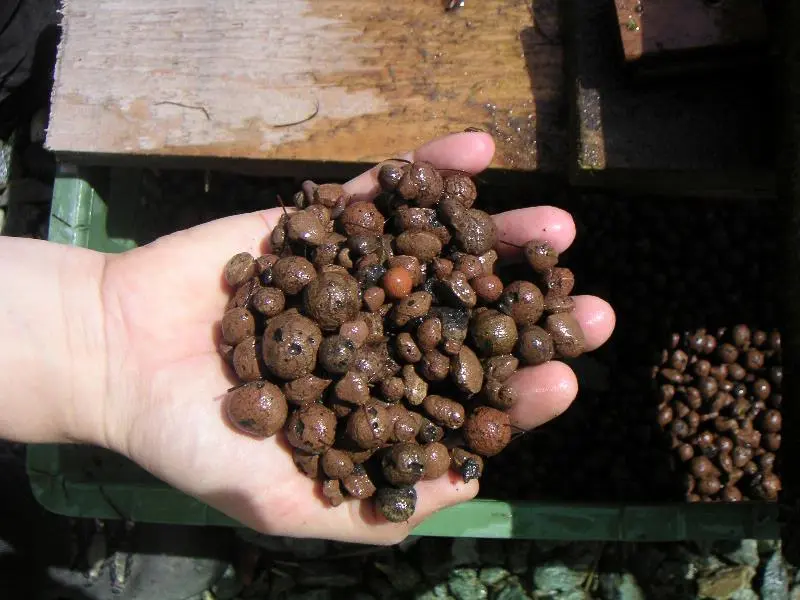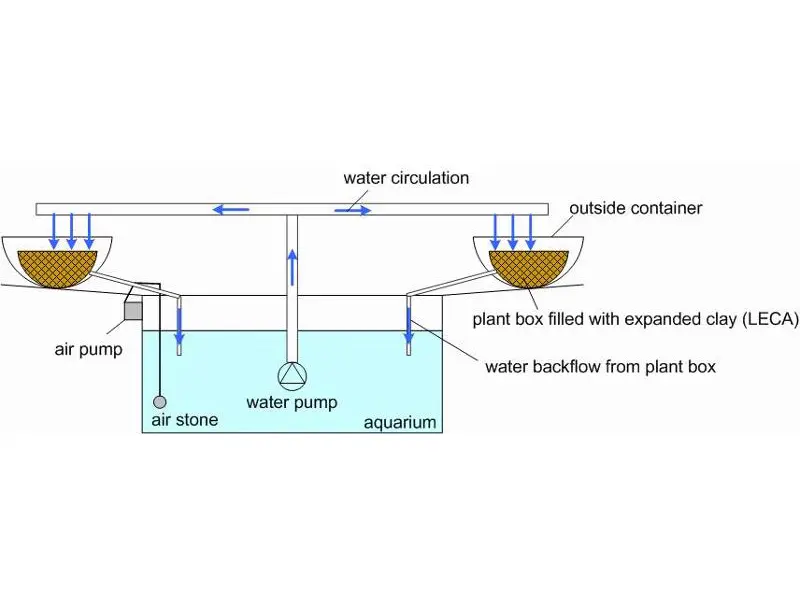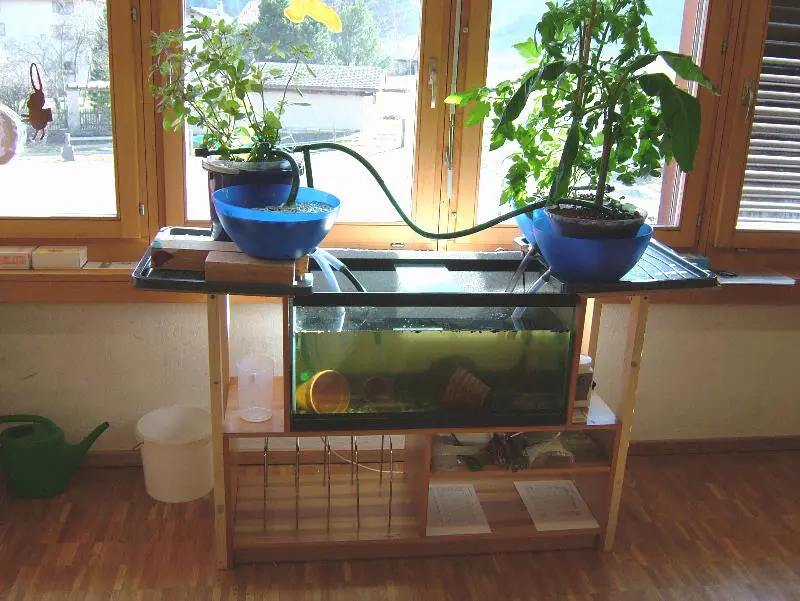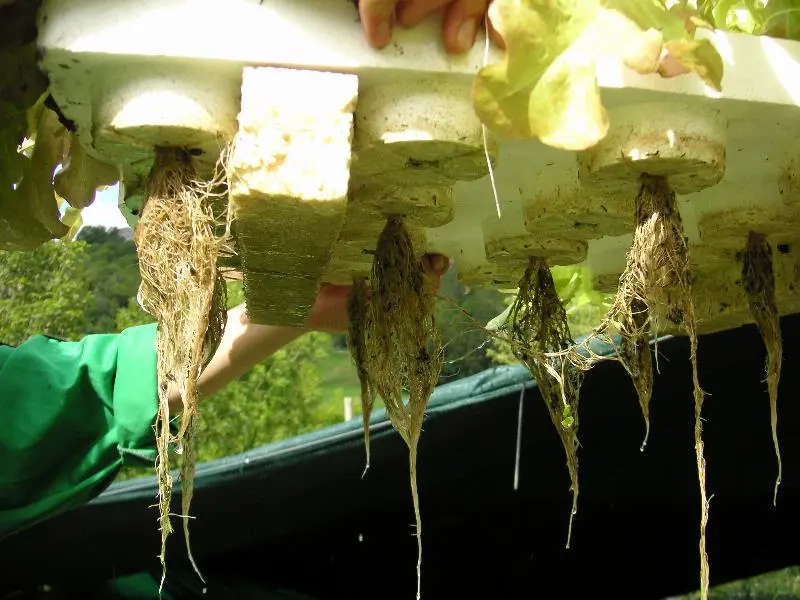Constructing a classroom aquaponic system
This first experiment «Constructing a classroom aquaponic system» is about how to set up a simple aquaponic system, to afterwards run different experiments. It doesn't deal with the fish and the plants yet, for it is very important to make sure the system is running properly before any higher organisms are involved. Thus it can be assured that no harm to animals will be done.
Aquaponic is a polyculture consisting of a fish-farm (aquaculture) and crop plants grown soil-less (hydroponic) wich are cultivated in the recirculation water of the fish tank . In an aquaponic system, the nutrients contained in the fish faeces are reused to grow crop plants.
Learning goals
- Know what elements an aquaponic system contains and what their use and function is when the system is running.
- Being capable of using different materials in a creative way in order to set up the system.
- Know how to check the functionality of the system.
Background information
Water is our most precious resource. It moves through earth's systems in many ways, beginning with its evaporation from the oceans into the atmosphere. In modern society man has interfered with nature in a large-scale way. For example most fish farms and agricultural farms are highly industrialized and contribute severely to the pollution of natural water resources.
Growing fish in an aquaponic system is an approach to sustainable fish farming. Nutrients contained in the water are recycled into plant biomass, the plants and the substrate they are growing on acting as a natural filter for the nutrient rich water. In this way, the water doesn't need to be exchanged except for the water lost through evaporation, and there is no harmful wastewater leaving the system.
Time requirement
It will take 4-8 hours to build the system. It should be tested for 1 - 3 weeks to make sure it is save to add the fish and the plants.
Material requirement

- Aquarium (volume 50 - 100 litres)
- Plant growing boxes with hose connection (volume 50 - 100 litres)
- Water pump with hoses and distributions to the plant boxes, approx. pressure > 1m
- Air pump with hose and a diffusor (oxygen-stone)
- Pea sized gravel to cover the aquarium bottom, 5 cm deep
- light expanded clay (LECA, see picture below) or pea sized gravel for the plant boxes, 40-80 l
Let's start
The system is built according to the figure below. It consists of an aquarium which is connected by a water recirculation system to one or more plant boxes filled with pea sized gravel or expanded clay (LECA). To make sure, the water is cleaned well enough when passing through the filter (plant boxes), the ratio of the volume of the aquarium and the volume of the plant boxes should of approximately 1:1. There are several design opportunities for these filter boxes. Different materials such as plastic buckets, salad bowls or trays can be used. Avoid metal containers and metal parts in the system, as they could be poisonous to the system. The water circulation is driven by an aquarium pump. Make sure the pump can lift the water from the aquarium to the plant boxes (ask the pump dealer).
Place the plant boxes by a window facing south or, if you haven't got a suitable window, buy fluorescent lamps (ask your electric dealer for suitable lamps) and place them 30 cm above the plant boxes. The tubes should be made especially for plants.
Place the aquarium below the plant boxes and preferably beside the window to shade it from sun light to prevent algae growth. Fill the aquarium with water, and if you use tap water, run the air pump for a couple of days to exhaust possible chlorine additions. Place the water pump in the aquarium and connect it with the hose leading to the plant boxes. If you have several plant boxes, get T-connectors which distribute the water evenly between them. The water flow to each plant box can be regulated by the number and size of water outlets drilled in the distribution hose, and also by setting the plant boxes at different heights above the aquarium.
For the water backflow, connect a hose to the bottom of the growing bed, and secure the hose with a clip. Make sure the backflow hose has enough flow-through capacity: if the water backflow is slower than the irrigation, the plant box will overflow!
The air pump is your backup for oxygen supply in case the water pump gets blocked or somehow doesn't work properly. Place it somewhere above the aquarium, to prevent water loss through the air pump in case of a power breakdown. Place the air stone a few centimeters above the bottom of the aquarium by fixing the air hose to the aquarium. Thus you prevent it from stirring up the sediments at the bottom.
You can make the aquarium look better by adding different sorts of gravel, some stones and aquatic plants. For example you could put plants in the aquarium, which are planted on a floating device (e.g. styrofoam). This would shade the water and additionally, the plant roots would give the fish a place to play in or hide.
Finally, you can fill the plant boxes with the substrate, pea sized gravel or LECA. The substrate must be cleaned from dust and small particles, as these will tarnish the water and could harm the fish gills. Best wash the substrate in a bucket of water and use a colander or a strainer to filter it.
There are different ways to circulate the water in the system. If the pump is working all the time, the water circulates continuously, and the water levels in the aquarium and the plant boxes are always the same. In this case, it is important to keep the water level not too high in the plant boxes and the aquarium: in case of power failure or pump maintenance, all the water contained in the plant boxes will flow down to the aquarium. You don't have to calculate water volumes, if you follow this trick: first fill the aquarium to the upmost level you still tolerate. Then switch on the pump, the water level will fall. After one hour, mark the water level of the running system on the aquarium glass - you know have a mark, to what level you can refill the aquarium while running.
In other systems, a timer is connected to the pump, flooding the growing bed periodically. In this case, the pump almost fills the plant boxes with water, which then slowly flows back to the aquarium. This is called an ebb and flow system. We recommend to run the pump for 2 - 5 minutes every half hour. If you run the pump during longer intervals, there is a risk that the return hose cannot swallow all the water which will result in a flooded classroom.
We recommend a system with continuous water flow: it achieves a better water quality and is easier to control, because system failures are easier to detect. However, for special plant species and to show the different concepts, you can add a periodic circulation by installing a second pump, controlled by a timer.
See and feel
- When washing the pea sized gravel or LECA: if the water is clear, the substrate is ready to use.
- Check leakages and functionality of the water circulation.
- Evaporation: Observe how the water level in the aquarium sinks during a week (or two).
Didactical comments
Building the filter (plant boxes) provides a lot of creative thinking in finding different suitable materials and modifying it to get an appropriate functionality. We recommend to build and test the system at a place where it does not matter if it is getting wet.


